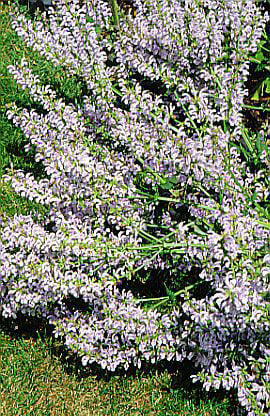Salvia pratensis Haematodes Group

clary Haematodes Group
Haematodes Group are clump-forming herbaceous perennials to 90cm, with a basal rosette of large, broadly ovate, dark green leaves and open branched sprays of 2-lipped pale lavender-blue flowers 2cm in length

Buy this plant
Size
Ultimate height
0.5–1 metresTime to ultimate height
2–5 yearsUltimate spread
0.1–0.5 metresGrowing conditions
Moisture
Well–drainedpH
Acid, Alkaline, NeutralColour & scent
| Stem | Flower | Foliage | Fruit | |
| Spring | ||||
|---|---|---|---|---|
| Summer | Blue | |||
| Autumn | ||||
| Winter |
Position
- Full sun
Aspect
South–facing
Exposure
Exposed or Sheltered Hardiness
H7Botanical details
- Family
- Lamiaceae
- Native to GB / Ireland
- No
- Foliage
- Deciduous
- Habit
- Clump forming
- Genus
Salvia can be annuals, biennials, herbaceous or evergreen perennials, or shrubs. They have paired, simple or pinnately lobed, often aromatic leaves and 2-lipped flowers in whorls, forming simple or branched spikes or racemes
- Name status
Accepted
How to grow
Cultivation
Grow in light, moderately fertile, humus-rich, well-drained soil. Best in full sun but can tolerate light partial shade; can be short-lived
Propagation
Propagate by seed in pots in a cold frame in spring
Suggested planting locations and garden types
- Wildlife gardens
- Mediterranean climate plants
- Cottage and informal garden
- Flower borders and beds
Pruning
Cut back flower spikes as they fade to prolong flowering
Pests
May be susceptible to sage leafhopper, slugs, snails and rosemary beetle
Diseases
May be susceptible to honey fungus (rarely), powdery mildews, verticillium wilt and foot and root rots
Get involved
The Royal Horticultural Society is the UK’s leading gardening charity. We aim to enrich everyone’s life through plants, and make the UK a greener and more beautiful place.